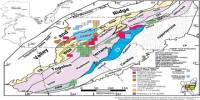Regional planning is concerned with the planning of areas that include both urban and rural areas. Its goal is to accelerate the social progress of any community’s community. Every country’s economic, social, and environmental planning processes must begin at the local level through an appropriate regional plan. Regional planning is not carried out to achieve a single goal.
Regional planning is an essential component of city planning. It focuses on how different aspects of a city can work together to make it function as efficiently as possible. However, the primary goal of regional planning is to create a society that is sensitive to socioeconomic and environmental issues.
Types of Regional planning –
(1) Physical Regional Planning:
This type of planning can be defined as an overall pattern of land use, as well as the character and distribution of public structures and constructions. It regulates the distribution and availability of physical facilities required for overall development. The goal of physical planning is to construct specific areas based on ideal social and economic conditions and to support regular life establishments.
(2) Economic Regional Planning:
This type of planning focuses on a region’s overall economic structure and activities. It is concerned with the creation, distribution, and consumption of material and non-material resources. This type of regional planning lays the groundwork for any region’s inclusive development.
(3) Allocative Regional Planning:
When the distribution of resources is highly uneven, this type of planning can be used. As a result, resource allocation determines the production, distribution, and consumption of resources. Area development is essentially a matter of locally concentrated assets and distribution.
(4) Innovative Regional Planning:
The interest in innovative planning for regional advancement grew in the last decade of the twentieth century. The relationship between innovation and development is highly unpredictable. In this planning, the planner is responsible for assessing capacity and proficiency while also attempting to improve the overall framework.
(5) Indicative Regional Planning:
This type of planning was most likely initiated in France following World War II. Charles d. Gaullein coined the term “indicative regional planning” in 1946. When a planner provides incentives to people in order to improve their lives, this is mostly regarded as indicative planning.
(6) Imperative Regional Planning:
Essentially, this is planning in which the usage is specified along with the definition of plans. As a result, the two parts of preparation, formulation, and execution, are already discussed at the outset. The final section is composed of the arrangement in the same clear manner as the first. The rationale for this planning is straightforward: once a plan is developed, it must be implemented.
















